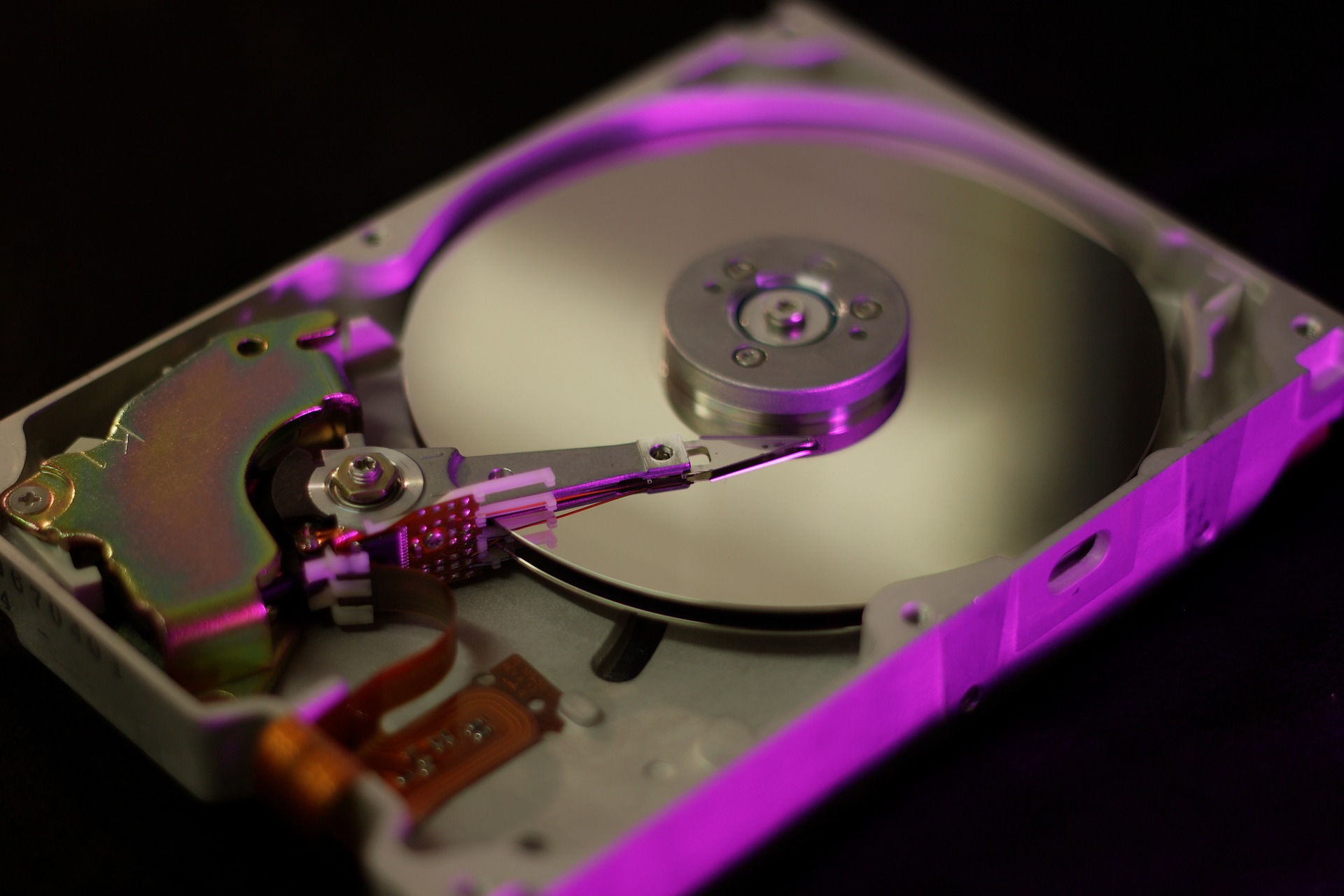Note : This page has been translated into English from French by a machine translation tool
The following is in addition to the article Why and how to choose a NAS to store and share your data ? which we invite you to read if you haven’t already done so in order to know in which context you might need to make a choice among the different types of RAID architecture we will see here. As an example, and in order to illustrate each type of RAID architecture, we will use the one we chose in the above-mentioned article, namely a NAS composed of four slots (also called bays) filled with as many 8 Terabyte hard disks each, for a total of 32 Terabytes of storage. This introduction completed, let’s get to the heart of the matter without further ado…
RAID ? But what does it correspond to ?
In order to provide you with a high level of security and performance, NAS, among others, allows you to benefit from RAID technology. We are still in the presence of an acronym that stands for Redundant Array of Independent Disks. We can still find a version of the acronym in which the letter I means inexpensive in French. The principle here is to use several physical hard disks to obtain a single storage volume. In other words, with a NAS connected to your network you will only see a single storage space on a computer also connected to it even if you have chosen to use the previous configuration, i.e. a NAS equipped with four physical hard drives. But the explanation doesn’t stop there since there are many ways to use these disks and for each of them a different version of RAID architecture. And you will have understood that, depending on the chosen architecture, you will obtain a final storage volume of more or less capacity with the previous configuration of 32 Terabytes cumulated. Your choice will be made according to your needs and preferences. Do you prefer security for your data to the detriment of performance ? The opposite ? Or a clever compromise between the two ? Let’s take a quick look at the main possibilities available to you…
RAID 0, also known as striped aggregated volume
You can set up a RAID 0 architecture from two hard disks. Here, you make a clear choice of performance since data is transferred simultaneously to each of the disks. Thus, you accumulate the transfer speeds since the data will be divided into as many blocks as you have hard disks in your system. In our starting example, you benefit from a transfer speed multiplied approximately by four and your storage space is maximal. You will therefore benefit from 32 Terabytes. On the other hand, you are clearly endangering all your data. If a single hard drive fails, all the data on the volume will be lost, since that drive will take a portion of each of your individual files and documents with it. In order to offer you a better level of security, you can then choose RAID 1…
RAID 1, also known as the mirrored disk system
By moving to RAID 1, you get rid of the major data security issue of implementing a RAID 0 architecture. Indeed, in this case, your hard disks are used in mirroring, that is to say that each data is replicated on each disk. As with RAID 0, a minimum of two hard disks is required and data security is all the more important as the number of disks you have is large. Returning to our example, your data is still intact as long as one of the four disks is still functional since it is present in its entirety on each of the disks. In this case, security is probably even in excess at the expense of performance since the transfer speed is equal to that of the slowest disk of the four and the total capacity corresponds to the capacity of the one with the least storage space. In our NAS example, your 32TB becomes 8TB with a RAID 1 system. So, you are starting to wonder if there is not a compromise between a good level of performance and a sufficient level of security? RAID 5 is certainly a solution not to be neglected…
RAID 5 or striped aggregated volume with distributed parity
If you find that the two previous formulas push either the search for high transfer speed or the search for maximum data security to the extreme, each time to the detriment of the other, RAID 5 is probably a good way to combine the two. Unlike RAID 0 and RAID 1 architectures, here you will need a minimum of three hard drives in order to implement a RAID 5 architecture. Your data will be individually separated into several parts in order to cumulate the transfer speeds of several disks, thus offering a good level of performance while allowing the failure of one of the disks without data loss. In fact, if we take our example with four 8TB hard disks, you will have, for each transfer, three disks on which a piece of your files will be distributed and the last one will be used to store parity data. The latter will make it possible to reconstitute the missing part that disappeared with the failed disk for each of the files stored on the volume. With four hard disks you can therefore cover yourself against the failure of one of them, have a useful storage space equal to three quarters of the total capacity and have a transfer speed that approaches the cumulative speed of three of the four hard disks. Indeed, since part of the resources are allocated to calculating the parity block for each data block, performance will be slightly reduced.
The main disadvantage concerns the moment of failure of one of the disks. The reconstruction of the data on the lost disk takes place and allows you to regain access to all of your data after a certain period of time. However, the recovery time is all the more important as the disks are of high capacity and contain a large amount of data. The recovery process therefore places heavy demands on the disks that are still functional, increasing the risk of a new failure. For this reason, a replacement disk, normally unused, can be added to the RAID 5 disk combination, which is only used to hold the recalculated data from the failed disk when such a failure occurs. The replacement disk is then simply replaced to restore the system to its original security level.
Some less common RAIDs…
We’ve covered previously the main RAID architectures you can choose for your NAS, but there are others. Most of them are combinations of the above architectures such as RAID 01 (0+1), RAID 10 (1+0), and RAID 50 (5+0). If we take again the case of our four hard disks, a RAID 10 architecture consists in associating them two by two in RAID 1 and associating these two clusters in RAID 0, thus guaranteeing data integrity until the loss of one disk per cluster. For RAID 50, a minimum of six disks is required by combining in RAID 0 two clusters of at least three hard disks each in RAID 5 architecture, again allowing for the loss of up to one hard disk per cluster while ensuring data integrity.
Finally, we will end with RAID 6, which is less used, and which allows, by combining at least four hard disks and using a more complex algorithm than the one used for RAID 5 architecture, but still based on the principle of parity, to tolerate the loss of two hard disks. Because of this double parity, only 16TB of storage out of 32TB will remain available in our example. It has no advantage over RAID 10 with such a low number of hard disks knowing that the resources needed to reconstitute files in case of failure are very important with this system because of the complexity of the algorithms.









Can you be more specific about the content of your article? After reading it, I still have some doubts. Hope you can help me.
Your article gave me a lot of inspiration, I hope you can explain your point of view in more detail, because I have some doubts, thank you. 20bet
After reading your article, it reminded me of some things about gate io that I studied before. The content is similar to yours, but your thinking is very special, which gave me a different idea. Thank you. But I still have some questions I want to ask you, I will always pay attention. Thanks.